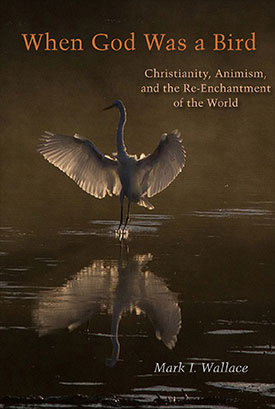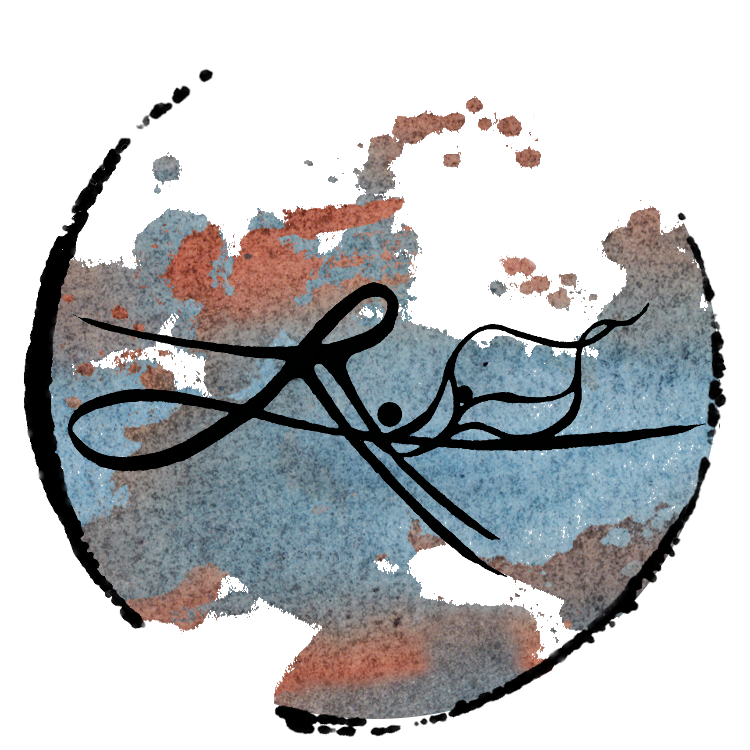Animism is having a moment in the pop culture spotlight. Thanks to the success of the Netflix show Tidying Up, featuring Marie Kondo and her joy-sparking approach to decluttering, thousands of Americans have been introduced to a subtly Shinto-influenced worldview* in which houses are ritually honored, books can be awakened with a cheerful tap, and even ugly t-shirts are thanked like dear old friends before being retired to the trash or a secondhand shop.
Meanwhile, over the last decade, environmentalists and conservationists have been facing the reality that despite our best efforts we’ve been unable to halt, let alone reverse, the ever-looming nightmare of global warming. Debates have raged over whether environmentalism as a political movement has failed — if we’ve entered a time in which “dark ecology,” action without hope, is the only adequate response. Earthlings everywhere are looking for a new approach. An approach, perhaps, that might even spark joy… Could animism be it?
With animism making a comeback among philosophers, environmentalists and reality TV hosts alike, what should arrive in my inbox but an invitation to review a new book by Religion & Environmental Studies professor, Mark I. Wallace, titled When God Was A Bird: Christianity, Animism, and the Re-Enchantment of the World. My interest was piqued! Were Christians embracing animism? And if so, what would a Christian animism look like?
 The thrust of Wallace’s argument is this: although the traditional view of Christianity is that it’s a world-denying religion focused on a wholly transcendent God, in fact (he endeavors to prove), Christianity has always had roots firmly planted in an earthy, nature-loving worldview. Though he frames this claim as edgy and controversial, it’s nothing new. For the past couple centuries at least, this “greener” view of Christianity has been growing in popularity especially among more liberal denominations. What is new is Wallace’s claim that Christianity is (and always has been) animistic.
The thrust of Wallace’s argument is this: although the traditional view of Christianity is that it’s a world-denying religion focused on a wholly transcendent God, in fact (he endeavors to prove), Christianity has always had roots firmly planted in an earthy, nature-loving worldview. Though he frames this claim as edgy and controversial, it’s nothing new. For the past couple centuries at least, this “greener” view of Christianity has been growing in popularity especially among more liberal denominations. What is new is Wallace’s claim that Christianity is (and always has been) animistic.
It’s a bold claim, and he’s right to note that it might raise some eyebrows. Saying that Christians could (and maybe should) become more animistic is one thing. But it’s hard to believe his assertion that Christianity has always been animistic, given its long legacy of proselytizing with the explicit and well-documented purpose of wiping out indigenous pagan cultures. Such an assertion is on par with claiming that Christianity has always been feminist because sometimes the Bible has warm-fuzzy feels about how gosh-darn pretty girls are and what wonderful baby-mommas they make! With its complex philosophical and theological critiques, modern feminist theory arose in part as a response to Christianity and has presented serious challenges to Christian tradition over the past century. In the same way, animism — particularly, the evolving modern understanding of animism — makes certain specific claims about the nature of our shared reality. It cannot be reduced simply to a kind of general “green-fuzzy” aesthetic response to the natural world.
Unfortunately, Wallace makes a habit of just this kind of reductionism. In his introduction, he starts off all right, drawing on contemporary anthropologists and philosophers to suggest that:
“animism flattens commonplace ontological distinctions between living/nonliving or animate/inert along a continuum of multiple intelligences: now everything that is is alive with personhood and relationality, even sentience, according to its own capacities for being in relationship with others.”
Even here, though, we can spot the first signs of trouble — what exactly does Wallace think this “flat ontology” looks like, and what does it mean for Christians in practical terms? He offers various descriptions of what he calls “Christianimism” (ugh), including: “[the belief] that God or Spirit enfleshes itself within everything,” and “God [as] ensouling every life-form with deific presence.” It’s hard to see how this approach — which centers God’s personhood and presence while framing other beings as mere “manifestations” or “expressions” of God — have much in common with an animism that (to quote scholar Graham Harvey) recognizes that “the world is full of persons, only some of whom are human.”
If Harvey’s definition of animism reminds you a bit of that wittily-brief definition of feminism — “the belief that women are people” — that’s no coincidence. In many ways, prejudiced stereotypes about women and nature have been mutually constructed and reinforced over the centuries, and it’s useful to compare the two categories in any attempt to deconstruct them. Wallace himself prompts for this comparison with his book’s title, a callback to Merlin Stone’s highly-influential feminist work from the 1970s, When God Was A Woman. In her book, Stone asserted that throughout much of Europe and the Middle East, there once existed a beneficent matriarchal society that centered on worship of the Great Goddess, until it was suppressed by invasive patriarchal religion. As a vision of female empowerment, the text occupies a special place on the cusp of second-wave feminism; however, it also perpetuates a number of misconceptions and prejudices that the intersectionality of third-wave feminism has only just begun to critique effectively. And as an historical analysis, its sweeping conclusions are dubious.
Wallace’s When God Was A Bird occupies a similarly conflicted place in current theological conversations around animism and earth-rooted spiritualities. His eagerness to embrace our planet as a locus of divinity and beauty is undeniable. But for all his earnestness, his historical argument remains unconvincing. Worse than that, his understanding of animism is decidedly… let’s call it “first wave.”
To see what I mean, you can play this fun little game as you read: for each example of the Christian “animistic” attitude that Wallace offers, try replacing the plants and animals with women. Then, ask yourself if you still think they’re good examples of respectful relationship. If a saint were to, say, drive all the dangerous whores out of Babylon, or transform an ugly old hag into a totally bang-able super hot virgin as a manifestation of God’s glory — would you consider that feminist? Yet these are the examples — driving native reptile or insect species out of a forest, forcing a tree to bloom in the depths of winter, etc. — that Wallace cites to show how Christianity has been animistic from the beginning. That these are the best examples he can come up with is not very encouraging.
Even when, like a broken clock that’s right twice a day, Wallace stumbles upon an example that could arguably support an animistic interpretation, it’s obvious that he’s not exactly clear on why. The most striking instance of his confusion is when he compares a healing ritual from Hildegard von Bengin’s 12th-century medical treatise, Physica, to the story of Jesus curing a blind man in John 9:6-7. In the Gospel account, Jesus spits into the dust, smears the resulting mud on the man’s eyes and tells him to wash in a nearby pool, whereupon the man’s sight is restored. In her text on natural medicine, Hildegard describes a three-day ritual which consists of:
“taking handfuls of green soil and packing it around the head and feet of a person suffering from numbness […]. The goal is for the earth itself, thoughtfully positioned near the patient, to be its own agent of healing and to radiate its restoring warmth into the numbed body of the sufferer. […] ‘You, earth, are sleeping in this person, N.’ […] ‘You, earth, grow and be useful in this person.'”
Wallace asserts that these two rituals are “almost identical,” presumably because they both involve healing and mud. Beyond these two similarities, however, there are essential differences that Wallace either overlooks or discounts as unimportant. In particular, three aspects of Hildegard’s ritual stand out as potentially animistic:
(1) In her ritual, the healer addresses the earth directly, recognizing the soil’s unique presence as a specific embodied entity, and not merely as a symbol that represents something else or as a manifestation that points to some other entity behind or beyond it.
(2) The healer asks for the earth’s participation in the healing process as an agentive being, recognizing that it possesses a particular perspective, as well as an interiority that is withdrawn and inaccessible except through its own self-disclosure and willing participation to make itself available to others.
(3) In speaking to the earth “sleeping in this person,” the healer acknowledges the complex interobjectivity** in which both human and soil participate. In this way, the ritual draws attention to the multiplicity and complexity of interconnected personhood that exists on many levels, and invites a perspective that can shift among these levels without either denying them or collapsing them into each other.
The Gospel account of Jesus’s healing includes none of these characteristics, and in some cases directly refutes them:
(1) The mud and spit are seemingly incidental to the healing act — Jesus kneels down and works with the dirt where he just happens to be, prompted not by the earth itself but by the questions of his disciples, and more indirectly, by God. There’s no immediately obvious reason why the blindness (or its cure) is explicitly tied to this particular mud or its characteristics; other instances of Jesus’s healing miracles show him making use of whatever materials are available. For this reason:
(2) The mud and spit are, at best, treated as tools or symbolic extensions of Jesus’s divine power, not as agentive beings in themselves. They have no interiority or perspective. They do not act themselves but are only acted upon by others. Wallace describes this healing ritual as “shamanic” and examines the ways in which it grapples with issues of boundaries and transgression. But even with the most generous reading, the healing is at best an act of sympathetic magic in which “like attracts like” — the symbolically impure mud, ritually “charged” with Jesus’s spit, draws out the impure/harmful blindness from the man and so cures him when he washes both away with the (symbolic purity of) clean, fresh water. It is only after and because of this miracle that the pool (but not the dirt) is named.
(3) Far from acknowledging a complex interobjectivity, the use of mud as a symbolic tool in this way lends itself to just the opposite reading: a concern for how one’s purity (ie one’s bodily and spiritual integrity) can be corrupted by overly porous boundaries, resulting in a blindness which, like dirt, is “matter out of place” that needs to be removed in order for the person to be cured and “made whole.” Just prior to this miracle, Jesus’s disciples speculate about the cause of the man’s blindness, suggesting it’s due to some sin he or his parents committed — but Jesus explicitly rejects this explanation and the relationality it suggests. Instead the blind man himself, like the mud, is a tool that God uses to demonstrate his power.
Were Wallace to offer an alternative, animistic reading of the Gospel miracle, I might still quibble with his interpretation — but he doesn’t even bother! Instead, he seems not even to recognize how these “almost identical” rituals are actually very different. He conflates them (along with many other superficial and sometimes downright strange examples throughout the book) and offers a version of animism in which God’s personhood is always and repeatedly foregrounded, and there is no meaningful distinction between “person” and “tool” because even human people are wielded as tools by God. Rather than highlighting the personhood and agency of such tools (as I suspect he thinks he’s doing), he merely succeeds in reducing the former to the latter.
This issue of foregrounding and backgrounding is a serious overarching problem in Wallace’s text. While distinguishing between foreground and background is natural — a result of the way we perceive, process and participate in the world — one of animism’s basic insights is that these foregrounds and backgrounds are not static, inherent aspects of reality but instead arise from particular perspectives. Different human and non-human perspectives will foreground different aspects of our shared reality while backgrounding others. An animist text would, ideally, explore these shifts in perspective deliberately and conscientiously, interrogating and de-centering its own assumed or inherited perspective — for instance, asking how non-human persons might construct foreground and background differently and gleaning insights from the tentative answers that such questions provoke. Unfortunately, when Wallace manages to acknowledge a shift in foreground/background at all, he does so only in a single direction and to one specific end: in order to background individual persons in nature and foreground the human relationship with God.
You can see this backgrounding in a very literal way in his tendency to focus on metaphors of nature as environment. A familiar example of this is the popular quote attributed (incorrectly) to John Muir: “Nature is my church.” Though Muir never said exactly these words, he did often describe the natural world as a location within which humans encounter God, and Wallace leans heavily on this concept. Non-human beings, such as pine trees, may collectively contribute to the ambience of that environment, but usually only as a pluralized abstraction. Rarely do non-human persons make individual appearances or express individual perspectives on this human-God encounter in Wallace’s accounts. Even when they do appear as individuals, he immediately undermines this individuality by reattributing their expressive agency to God.
(An aside to return to our feminism parallel: This reattribution is akin to viewing women as extensions of male agency, so that even when a woman seems to be acting independently, her actions are reframed as a man’s choice not to act and/or as the object of the male gaze. See also, Morton’s Ecology Without Nature for a fascinating analysis of how nature-as-environment is commonly evoked through the “ambience” of lists in the nature writing genre. And then turn to page 77 in When God Was A Bird for a striking example of Wallace just straight-up listing bird species like some kind of avian Mambo #5.)
Again, Wallace engages in this reframing even with texts that are arguably good candidates for a re-imagined Christian animism. The Biblical call to “consider the lilies of the field,” for instance, could be read as an invitation to consider the lilies as persons who have a particular perspective, the capacity to perceive how they are cared for and supported, and even a kind of agency (insofar as they can refrain from toil). The passage prompts the reader to imagine the lilies’s perspective and compares them to “Solomon [a person] in all his glory.” And yet, Wallace twice makes sure to reframe this as a comparison not to Solomon-the-person but to Solomon’s temple as an aesthetically pleasing environment. He rejects the invitation to “consider the lilies” and considers instead only the field — that is, lilies-as-background.
For the most part, Wallace’s “Christianimism” seems to endeavor to look forever cross-eyed at the natural world — or rather, to look through it, as if it were one big Magic Eye puzzle in which you can see a 3D picture of God riding a dolphin if you squint just the right way. There are times, however, when he comes tantalizingly close to noticing the complex non-human community as more than just pleasing soft-focus background. These occasions are usually the direct result of his time spent outside in the natural world, in prayer or on pilgrimage. It’s when he is confronted with the undeniable presence of particular plants and animals living and acting in the world around him that he is forced to meet them face-to-face. His abstracted theological narrative momentarily falters, and we as readers have a fleeting chance to imagine a world in which non-human persons look back at us.
Perhaps, then, if there is hope for a more robust animism emerging within today’s Christianity, Christians might find themselves on the right path if they follow the same directions musicians take to get to Carnegie Hall — practice, practice, practice!
In the meantime, Wallace’s When God Was A Bird represents a well-intentioned first step along that path. Unfortunately, it is the same first step that Christians have been taking for hundreds of years. The “green” approach to Christianity seems to have one foot stuck firmly in place, limping in circles around that same sticking point for centuries. Which raises the question: what exactly is this sticking point? If Christians are interested in taking more than just that first step — moving beyond the most basic acknowledgement that “nature is good” — at some point they’re going to have to ask themselves what is holding them back? What is it about their doctrines and/or ritual practices that prevents them from following the call of longing and belonging that so many of them have been noticing just on the edge of their hearing for so long…?
Rather than yet another re-imagining of the Christian past to suit today’s sensibilities, I long for an honest wrestling with Christianity’s history of missteps and an informed, intersectional, interobjective attempt to redress them. That’s the book I want to read!
* There are a lot of hot takes on Marie Kondo going around right now, including some terrible takes rooted in racism and sexism. The philosopher Dr. Jonathan Flowers (@shengokai) has some excellent Twitter threads addressing some of these issues. I highly encourage you to read and follow!
** Interobjectivity is perhaps too specialized a term for this kind of review, but it’s one I find super useful. The concept was introduced by Bruno Latour (pdf) as a way to talk about the social agency of objects and to challenge the common distinction in Western philosophy between subjectivity and objectivity. It’s been further developed by other scholars, my favorite being Timothy Morton, particularly in his work on hyperobjects.
Photo Credits:
• “Dove,” by Jan Daciuk (CC) [source]
• “Dove In Flight,” by Victor Paul (CC) [source]
• “Eight Flying Doves,” by Hartwig HKD (CC) [source]
• “Dive,” by Daniela (CC) [source]





Brilliant review. I really appreciate your discerning eye and ability to bring such critical thinking, and resource sharung, to this subject.
LikeLike